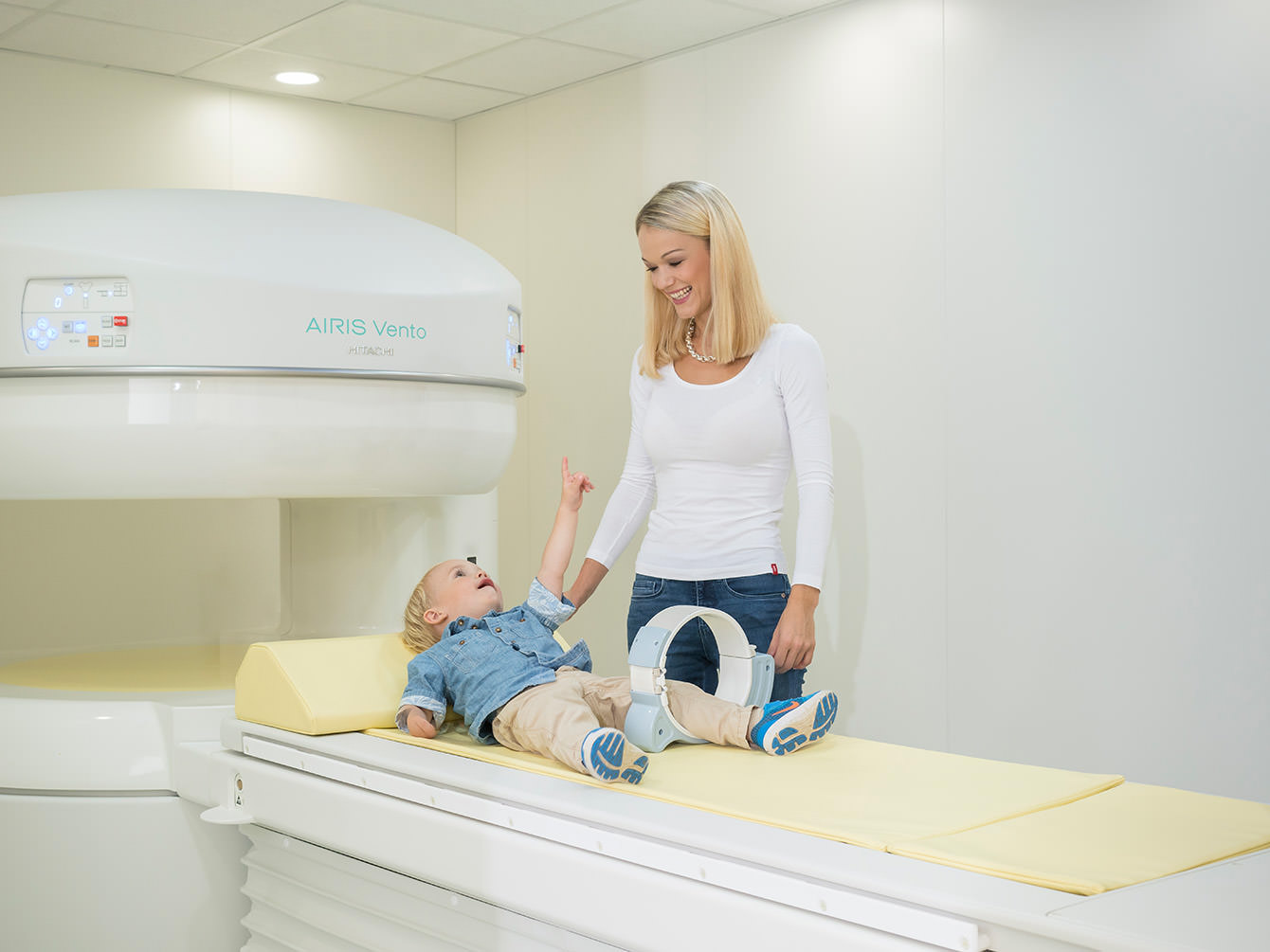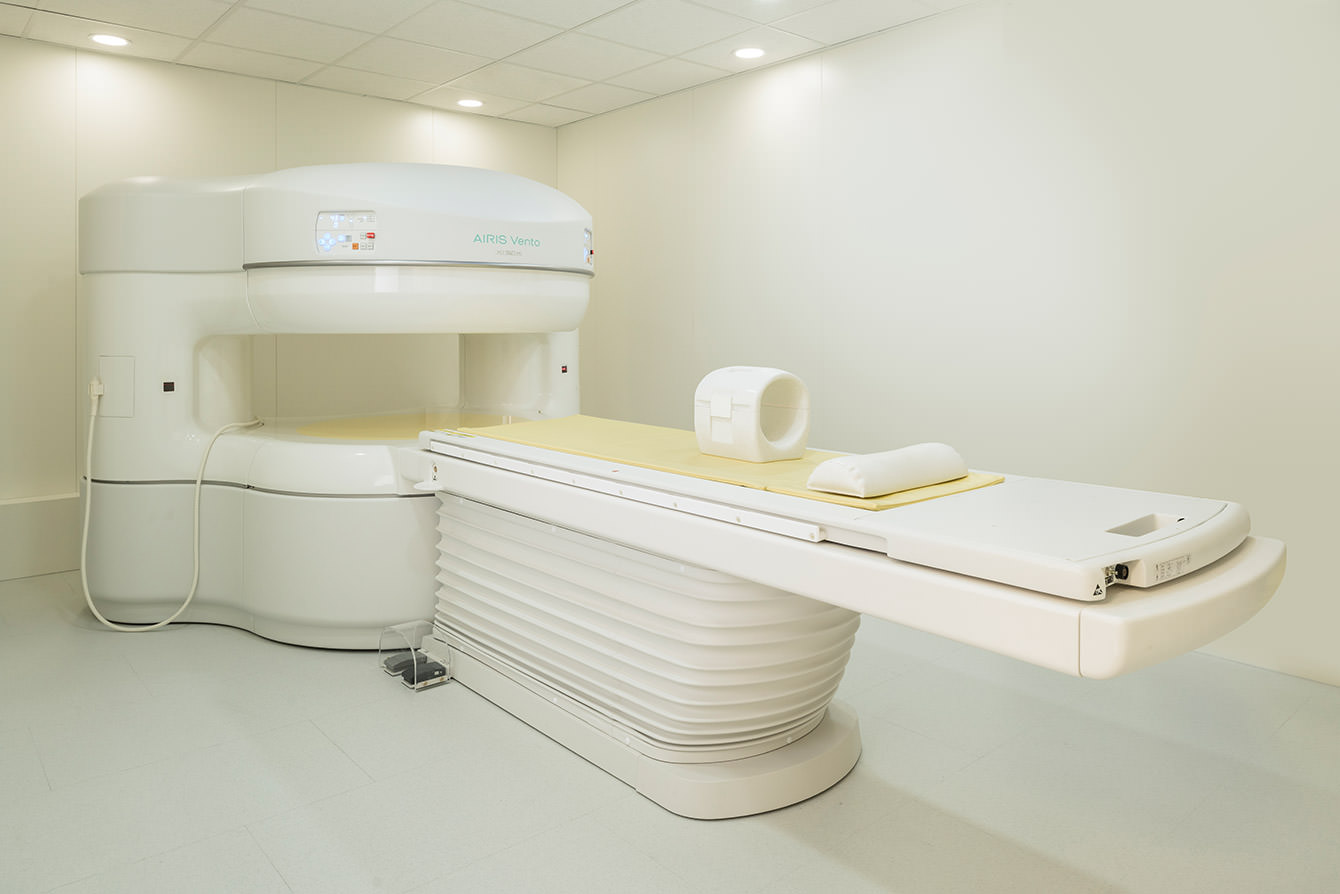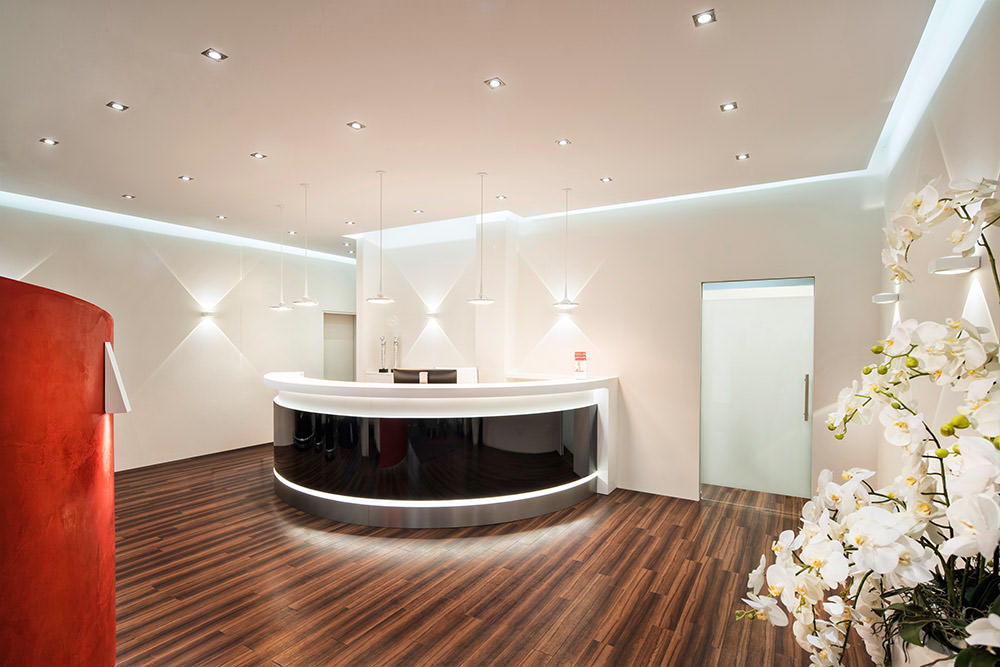What is an MRI scan?
Magnetic resonance imaging (MRI scanning) is a modern radiological procedure in which pictures of the human body are generated using magnetic fields and radio waves without the use of X-rays. The detailed images of anatomical structures revealed by an MRI scan allow doctors to make a precise diagnosis by identifying the smallest changes to these structures.
Open MRI scanners open up new horizons for pain patients with interventions that produce high-quality imaging without ionising radiation.
Dr Marc Dehos, DSD
Indications for an open MRI
An open MRI scan is suitable for imaging any cross-section of the spinal column (cervical/thoracic/lumbar spine) and pelvis, as well as all large proximal joints such as the shoulders and hips. It is also suitable for imaging the elbows, wrists and hands, the joints in lower extremities such as the knee and ankle (including the Achilles tendon), and the entire foot. Children and patients with claustrophobia in particular benefit from the stress-free, relaxed experience offered by an open MRI.
A scan with ionising X-ray radiation is not used and the scan does not take place in the conventional ‘tunnel’ but in a system that is open at an over 300° angle.


.jpg)
Preparing for an MRI scan
Before the scan, any mobile phones, watches, purses/wallets, bank cards, glasses, jewellery, metal objects, hearing aids, prosthetics, etc. need to be removed so that imaging and picture quality is not affected.
In some cases, patients will need to be given a contrast agent to improve the level of detail in the picture: this is generally well-tolerated and does not cause kidney problems. In such a case we however recommend that you have your creatinine level determined for your own safety. Please speak to your general practitioner about arranging a blood test prior to the examination.
Scanning procedure
At DSD, we use a modern, open MRI machine from Hitachi for our scans. The scan typically takes around 20 to 30 minutes, involves no X-rays or painful procedures, has no known side effects and does not cause claustrophobia because of the open design. During the scan, you will hear faint knocking noises. It’s important that you stay very still during the scan, since movements will produce blurring in the image.
The joint /organ area to be scanned is usually inserted into a small coil to increase the quality of the final image.
If you experience a problem with how you are lying in the machine, with the coil or with the level of noise you are hearing, you can signal or talk to us at any time and we will interrupt the scan to help you if necessary.
The results of your scan are saved in a digital format and can be provided to you as a physical printout as well as on a CD.
Your health is precious – we help you to protect it.
Professor Jürgen Fischer, DSD
Exceptions
An open MRI scan cannot be performed if you have a pacemaker, defibrillator or insulin pump fitted, or if you have a cochlear implant or an implanted neurostimulator. Other exceptions include having metallic particles from an injury anywhere in your body, especially the head area.
Before each scan, you need to complete a form so we can advise you of these exceptions (known as ‘contraindications’) and ensure that the procedure is safe for you.
Gallery






